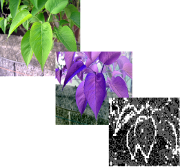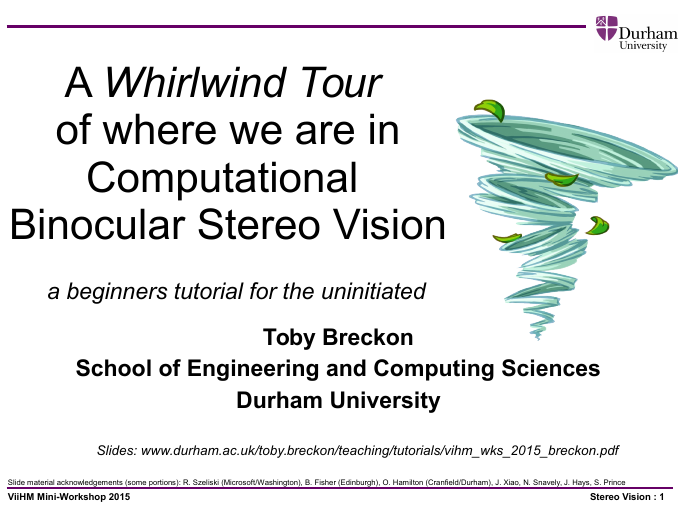
A brief (and somewhat "whirlwind") overview to the use of Machine Learning techniques in computer vision. Aimed at the uninitiated (with little or no background) whilst still presenting relevant material close to the current state of the art. Concentrates on four specific thematic areas:
- decision/logic tree approaches + relation to current ensemble classifiers (example used - Decision Forests / Random Forests) and feature cascade approaches (example used - Haar feature cascades)
- neural inspired approaches (example used - shallow Neural Networks)
- kernel inspired approaches (example used - Support Vector Machines)
Further insight into common machine learning tasks in computer vision, best experimental practice and offer a range of tangible exemplar applications from the research literature. Given the limitations of time a number of topics are overlooked or given a fleeting mention - this notably includes probabilistic approaches which are a tutorial topic in their own right. It is not intended as an all encompassing overview but instead a mere introduction.
This tutorial was originally developed for the BMVA Computer Vision Summer School (updated and presented annually 2010 - 2016).
Slides
Extra Material

An extended version, presented at the EPSRC Vision & Language Network Workshop (June, 2015) additionally presents a swift overview of (what are now considered to be) traditional gradient derived features in computer vision (feature points, descriptors and histograms), together with feature similarity measures and feature distributions.
Slides
Extra Material - Features
Extra Material - ML
An extension (NATO SET-163 / RTG-90 meeting, October 2013) explores the full-circle relationship between the simple decision tree approaches (1980s) and their subsequent re-use (decades later) in state-of-the-art approaches such as Decision Forests and Ferns.









